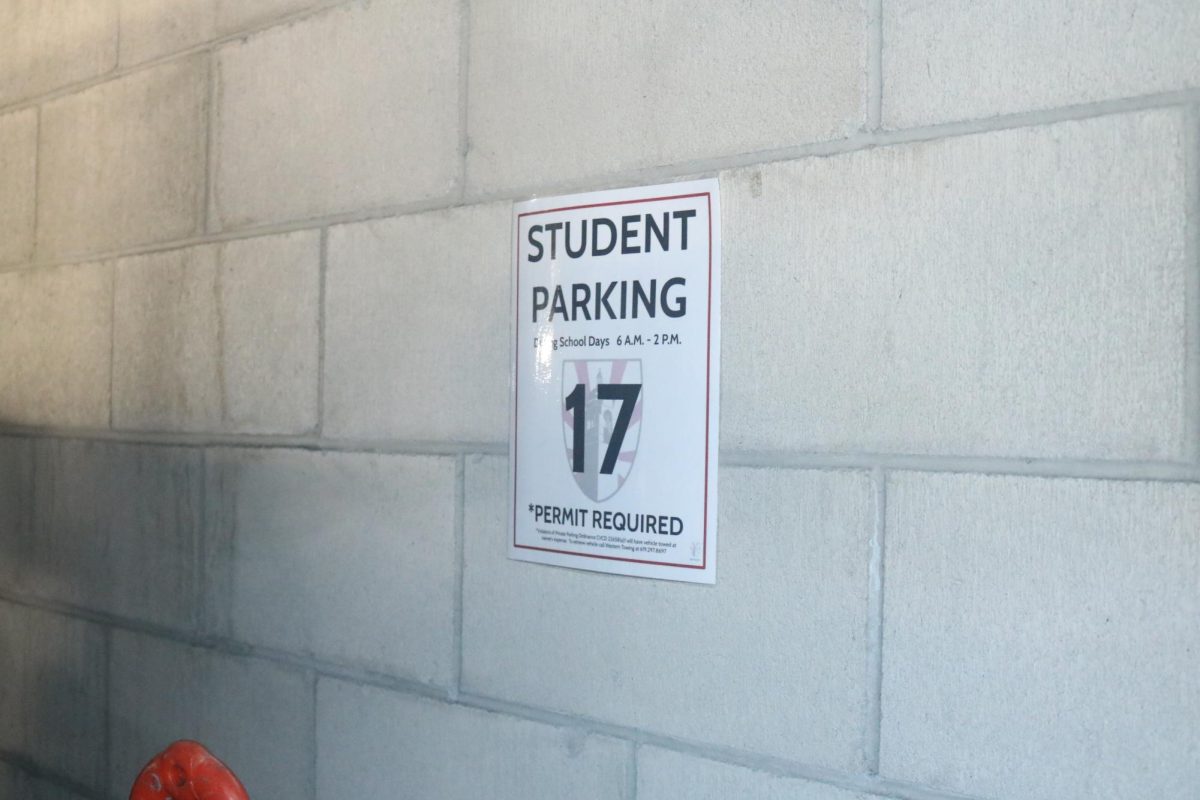As you walk around the Bishop’s campus, you’ll glimpse dozens of maroon Bs — on the edge of a license plate, on a school sports team sweatshirt, or even on the frequent first-day photo op sign near Cuvier. But despite how often you see them around campus, B is not the letter Bishop’s students are obsessed with.
You guessed it: the letter is the one and only A.
At Bishop’s, a grading culture is fueled by a highly academic student body who have ambitious college goals and are vulnerable to intense comparison with their peers, creating a community obsessed with getting high grades. The A is the gold standard.
But why? Some of it inarguably is a result of an intelligent study body. Standardized test scores provide a good example. The national average SAT score is around 1050; thus, a score of 1350 puts students in the top 10% — and the Bishop’s Class of 2024’s average score was 1455 according to the official college profile. The ACT comparison is similar: a national average of around 19.8 out of 36 in 2022, compared to the Bishop’s Class of 2024 average of 32.5.
Inevitably, smart students create high expectations. As History and Social Sciences Chair Ms. Karri Woods explained, students at Bishop’s see “part of their identity as [being] an academic person.” Thus, “[At Bishop’s], the cohort is different, and the expectations are higher,” she added. The highly academic nature of Bishop’s magnifies the students’ importance of grades. As Selene Wang (‘25) put it, “Getting a C feels like a huge failure, and I do feel that people look down on these grades more than they would at other schools.”
Eleanor Meyer (‘26) added, “None of my friends at Bishop’s are satisfied with a low B or C grade.” Kai Mehta (‘28) agreed, saying that a low B or C felt like a “fail,” and that even “an A- is seen as sub-par at Bishop’s.” Biology Teacher Ms. Kristina Norrgard noticed these same sentiments in class. She explained, “I turn back a test and I’m like, ‘The average was an 87,’ and everyone’s like, ‘Wait, what?’”
This disappointment in supposedly “low” grades partly results from the academic level of the student body — but much of it can be attributed to the inevitably grueling process of college applications. According to Director of College Counseling Ms. Wendy Chang, the college application process has become more complicated in recent years. She explained that years ago, “You could get a B- or a C+ and possibly still get through the college process unscathed.” Now, “There would have to be a powerful context for a student to be admitted to a selective institution with these grades,” she added.
Students feel the weight of college pressures. “There are constantly outside sources [like] friends, parents, social media telling us what GPA we need to have to be ‘successful’ in college applications,” Eleanor said. She added that this has impacted how she views grades, because what used to be a “pretty solid number” now feels “average” for college.
As Selene said, “Getting bad grades carries a much greater stigma; it’s not just a failure on [a] test or quiz, it’s an entire host of concerns about…the future of their education.” She continued, “For the most elite colleges, perfect grades, or at least close to perfect grades, seem like a bar you must pass to even be considered for admissions.”
For many teachers, this college-focused mindset creates “a really tough environment” to grade in, as Ms. Norrgard put it.
But as Selene said, grades are stressful due to a “host of concerns.” In addition to college, what Ms. Chang characterized as a “very intense comparison culture” also shapes how students think about their grades.
Kai attested to the fact that the high academic standards can be attributed to “competition and comparison” on the Bishop’s campus. “While we strive for excellence instead of perfection, striving for perfection is still a very big part of the Bishop’s experience,” Kai said, “When we know we’re trying hard but we don’t feel as if our grades are reflecting our effort, and we see our classmates excelling, we’re going to be disappointed.”
Eleanor similarly mentioned: “Nothing ever seems good enough, because everyone is working so hard, and if you aren’t doing as well as the person next to you, you’re falling behind.”
Because of how much emphasis is put on grades, it complicates grading for teachers. As Ms. Norrgard noticed, “Everyone expects the A. They expect that if they work hard, they’ll get an A.” She explained that because of this, she sometimes feels bad about “not giving the grade that a kid feels like they worked for.” English Teacher Mr. Adam Davis added that because grades are seen as “a barometer of happiness” there is “pressure from many different parties to offer grades that make students happy.”
When Mr. Davis first came to Bishop’s 15 years ago, he correlated a C with an average grade. Thus, in the first set of essays he graded, the average was a C, and the highest grade was a B+. Mr. Davis explained, “The student who got the B+ burst into tears. And he had the highest grade.” Later, he explained, “Administrators explained to me that it would be helpful to understand that, at Bishop’s, a B+ should be viewed as an average grade.”
Ultimately, in a world fueled by the ever-challenging college process and a school with bright, comparison-driven students who see prestigious colleges as their path to success, obsession with high grades remains prominent. Education is not seen as simply a way to learn, but a means of self-worth, and a stepping stone for the future. When the love for learning is lost, much of the value of education suffers also.









